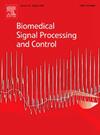Development of a non-attached multi-person emotion recognition system based on sitting body motion signals
IF 4.9
2区 医学
Q1 ENGINEERING, BIOMEDICAL
引用次数: 0
Abstract
Automatic emotion recognition is a popular application field under the rapid development of sensing and information technology. Traditional automatic emotion recognition mainly uses attached sensors for target signal recognition, which is difficult to widely apply in practice because of expensive equipment, complex sensing systems, susceptibility to interference, and the potential to cause predictive emotional interference for users. In this work, a Non-attached Multi-person Emotion Recognition System (NMERS) is constructed, which recognizes the different emotions of multiple people through human sitting body motion signals. A flexible sensing cushion composed of four pressure sensors is used to collect real-time sitting motion signals from the user in a non-attached way. The Convolutional Neural Network-Long Short-Term Memory-Attention (CLATT) neural network model establishes the mapping relationship between the sitting body motion signals and four emotional categories, achieving an average accuracy of 98.05% for individual classification and 91.25% for cross-individual classification. Subsequently, by deploying CLATT on the upper computer and networking multiple sensing subsystems, real-time emotional state recognition of multi-person via a non-attached sensing system is successfully realized. NMERS builds a bridge between human body motion signals and emotional states, enhancing the practical application value of automatic emotion recognition systems.

基于坐姿身体运动信号的非附着式多人情绪识别系统的研制
在传感技术和信息技术快速发展的背景下,情感自动识别是一个热门的应用领域。传统的自动情绪识别主要采用附着式传感器对目标信号进行识别,由于设备昂贵、传感系统复杂、易受干扰以及可能对用户造成预测性情绪干扰等原因,难以在实践中得到广泛应用。本研究构建了一个非附着式多人情绪识别系统(NMERS),该系统通过人体坐姿运动信号来识别多人的不同情绪。使用由四个压力传感器组成的柔性传感垫,以非附着的方式采集用户的实时坐姿运动信号。卷积神经网络-长短期记忆-注意(CLATT)神经网络模型建立了坐姿身体运动信号与四种情绪类别之间的映射关系,个体分类的平均准确率为98.05%,跨个体分类的平均准确率为91.25%。随后,通过在上位机上部署CLATT,并将多个传感子系统联网,成功实现了非附着传感系统对多人情绪状态的实时识别。NMERS在人体运动信号和情绪状态之间架起了一座桥梁,增强了自动情绪识别系统的实际应用价值。
本文章由计算机程序翻译,如有差异,请以英文原文为准。
求助全文
约1分钟内获得全文
求助全文
来源期刊

Biomedical Signal Processing and Control
工程技术-工程:生物医学
CiteScore
9.80
自引率
13.70%
发文量
822
审稿时长
4 months
期刊介绍:
Biomedical Signal Processing and Control aims to provide a cross-disciplinary international forum for the interchange of information on research in the measurement and analysis of signals and images in clinical medicine and the biological sciences. Emphasis is placed on contributions dealing with the practical, applications-led research on the use of methods and devices in clinical diagnosis, patient monitoring and management.
Biomedical Signal Processing and Control reflects the main areas in which these methods are being used and developed at the interface of both engineering and clinical science. The scope of the journal is defined to include relevant review papers, technical notes, short communications and letters. Tutorial papers and special issues will also be published.
 求助内容:
求助内容: 应助结果提醒方式:
应助结果提醒方式:


